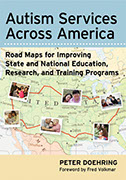Staff Training
Teacher Training with the University of Delaware
Delaware is one of the few states to require that teachers of students on the spectrum complete a 15 credit post-graduate certificate in ASD. During my tenure, I substantially revised this program in collaboration with the University of Delaware, as an adjunct faculty in the Department of Education.
Related Content
On this site
- I rewrote the two core graduate seminars offered by the University of Delaware, and taught these for several years. I also helped to revise several other courses, and served as a guest lecturer.
- I negotiated with the University of Delaware to create a course cycle that would allow teachers to access the courses in the summertime, taking advantages of free tuition to state employees for summer courses.
- I helped to re-write state regulations pertaining to these certificates, to clarify the course cycle. I also worked closely with the state regulators to develop an approved list of courses at institutions outside of Delaware
- I developed mechanisms of oversight to ensure that school district administrators statewide provided tuition reimbursement, and to put teachers who had not completed the certificate on probation.
Other Staff Training
All of the other initiatives I undertook at DAP involved training of different staff in educational classification, behavior support, student safety, and extended educational and support services. I also undertook statewide parent and staff training in understanding and identifying evidence-based practices. These led to the elaboration of tired models of training and support, in which the type, amount, and level of training was adjusted in accordance with the staff member's role.
I also developed the expertise of selected DAP staff members by involving them in research projects and reviews focused on ASD identification and intervention, subsequently presented at national conferences (Abel, Doehring, Wagner, Ruhe Lesko, Peters, & Myers, 2008; Doehring, Gigliotti, Calkins, & Cain, 2008; Doehring, Lesko, & Abel, 2007; Doehring, Donnelly, Bray, & Myers, 2007; Finnegan, Bailey, Cain, & Doehring, 2002). I disseminated changes regarding the definition and identification of ASD by incorporating information into presentations to DAP staff and parents across the state.
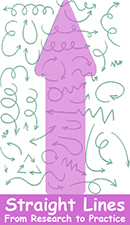 Build programs of professional development around core principles that translate research findings into specific practice guidelines with measurable outcomes
Build programs of professional development around core principles that translate research findings into specific practice guidelines with measurable outcomes
A main reason that I sought to lead the Delaware Autism Program was to explore how to translate research into practice on a large scale. I quickly learned that most recommendations made by researchers regarding new assessment or treatment techniques lacked the critical information needed to ensure the effective implementation of these techniques by community-based practitioners. This critical information included supporting documents to establish fidelity, track progress, and to launch oversight.
I developed several related strategies to try to close this gap. I wrote detailed practice guidelines (Doehring and Becker-Cottrill, 2008) for each of the initiatives outlined in this section; the educational classification of ASD (Doehring, 2006, 2007); establishing whether a given practice is evidence-based and should be adopted (Doehring, 2005; Doehring and Reichow, 2007; Doehring, 2007), addressing challenging behaviors (Doehring, 2013), ensuring student safety, and supporting extended educational services. These guidelines were built around core statements that clearly established measurable expectations. These core statements were broken down further into specific steps that guided training, and supported fidelity assessments and administrative oversight.
In most cases, these core statements were linked back to supporting materials. Supporting materials included specific outcome research studies, professional practice guidelines, or state laws and regulations. Training in these guidelines incorporated these supporting materials. I integrated examples of these trainings in my books, and in presentations specifically targeting professional practice organizations
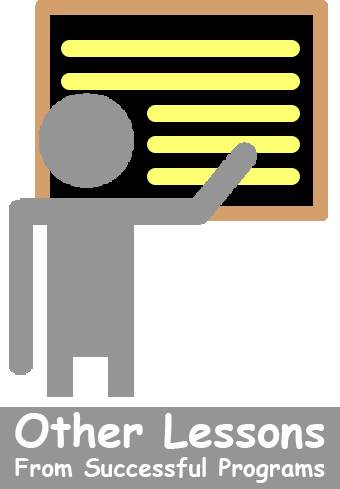 Create tiered professional development programs that tailor the content to the role and the expertise of different staff and different agencies
Create tiered professional development programs that tailor the content to the role and the expertise of different staff and different agencies
As a program leader, I was aware that doing professional development well was important but costly. To use training most efficiently, I looked more closely at how the content of each training activity aligned with the needs of different staff members. As I re-aligned training around core principles and practices, I also began to tailor different messages to different audiences. For initiatives that extended beyond school staff, I began to adapt messages to the role of different agencies and partners. I also began to adapt the training activities themselves, distinguishing between presentations meant to raise awareness at one end, and workshops and coaching intended to help create in-house expertise at the other. School-wide programs of positive behavior support provided an interesting a model for some of these activities.
Together, these strategies helped me to design tiered training programs that spanned disciplines and agencies, and that included professionals, parents, and program leaders. These strategies were applied to the training initiatives referenced above (Doehring and Becker-Cottrill, 2008); the educational classification of ASD (Doehring, 2006, 2007); establishing whether a given practice is evidence-based and should be adopted (Doehring, 2005; Doehring and Reichow, 2007; Doehring, 2007), addressing challenging behaviors (Doehring, 2013), and ensuring student safety. These tiered programs also incorporated core principles and specific practice guidelines.
For example, consider a tiered professional development program to promote a new approach at DAP to improve ASD identification and to raise awareness about the broader ASD spectrum. Activities included:
- A brief presentation to a broad range of community providers to raise awareness about early identification, describe changes to the school's assessment protocol, and describe mechanisms for referral to school-based programs
- A brief presentation to medical providers to clarify the difference between educational classification and medical diagnosis, describe changes to the school's assessment protocol, and propose how to collaborate with school-based programs to improve ASD identification
- An optional presentation to specifically describe ASD screening tools to medical and community-based providers, with follow-up consultation to provide coaching in the interpretation and limits of these tools.
- Other presentations to parents and front-line staff to raise awareness about the broader autism spectrum, changes to the school's assessment protocol, and implications for assessment and treatment
- A specific program to train selected, school-based teams statewide in the use of the Autism Diagnostic Observation Schedule and Autism Diagnostic Interview - Revised. This included follow-up consultation to provide coaching in the interpretation of and limits of these tools, with specific cases.
I also adapted these same principles to optimize more intensive and comprehensive training opportunities targeting a specific group. When revising graduate-level ASD courses for teachers, for example, I mapped out topic areas according to the teacher's role: Were they responsible for designing the lesson, for delivering a lesson designed by other, or for simply supporting others in delivering a lesson? I provided more comprehensive reviews of the underlying theory and research, and more opportunities to practice, as the teacher's level of responsibility for a given lesson increased. This represented a significant re-alignment of the course content, which had been focused much more on theory than implementation, and sometimes included detailed overviews of theory or research in areas for which teachers played a limited role.
This approach to tiered professional development became central to all major university- and community-based training initiatives I have since undertaken. This includes the design of training initiatives for the ASD LEND program at the Children's Hospital of Philadelphia, for the in-patient treatment program at Foundations Behavioral Health, and the design of a new graduate seminar at Lehigh University.
 Long-term plans to expand competence or increase overall capacity must include specific activities to cultivate new experts within the organization
Long-term plans to expand competence or increase overall capacity must include specific activities to cultivate new experts within the organization
When learning new clinical or educational practices, most professionals need feedback, coaching, and supervision in order to establish the level of competence needed to work independently. Coaching and supervision must be provided by someone with some degree of additional training and expertise in these practices.
When seeking to expand sites and services at the Delaware Autism Program, I quickly learned that availability of experts in different practices will determine how quickly and effectively new practices can be being added, or how many new trainees can be enrolled. Such experts proved to be very difficult to find. This was especially true when I needed someone familiar with a specific population (for example, adolescents with ASD and significant intellectual disability), experienced in a specific type of setting (for example, a residential program), or familiar with specialized techniques (for example, responding to intense aggression or self-injury). I have encountered a dearth of experts in every program with which I have since worked. In each case, other advocates and program leaders over-estimated the availability of such experts. Plans based on these faulty assumptions inevitably stalled (I later encountered a similar set of false assumptions about the availability of leaders with the training and experience needed to undertake comprehensive program development).
In my 2011 and 2013 books, I describe a range of strategies for compensating for the lack of expertise. These include creating long-term contractual agreements with outside consultants to groom in-house experts, tailoring professional development goals to the expertise likely available, and creating mechanisms to identify and mentor promising staff members as they assume greater initiative in leading professional development.
These strategies are especially important when creating a new program or a new site. In these cases, experts working hand in hand with program leaders can help ensure consistency across sites, anticipate problem areas, and identify the mix of staff and students best candidates for new sites. Experts can take increasing initiative in delivering and then developing training to different audiences. In the best case scenario, these in-house experts can grow to become the next generation of program leaders, and compensate for the lack of a natural pipeline for creating new leaders.
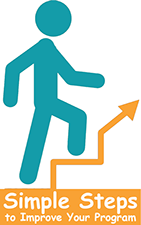 Create a pipeline of core professionals from each discipline, and assemble the resources needed to build and sustain their expertise.
Create a pipeline of core professionals from each discipline, and assemble the resources needed to build and sustain their expertise.
Almost all programs of services depend on a core group of professional staff. This would include teachers in schools, nurses in hospital programs, job coaches in a vocational program, and advisors (or their namesakes) in a residential program. Leaders need to carefully evaluate the time and resources needed to hire, train, and mentor new staff member, and then build a program to meet this need. This should also include a frank assessment of their likely background: many leaders over-estimate the training and experience of new recruits. At DAP, this resulted in a significant investment in teacher mentors, and re-design of the graduate certificate for teachers described above. We learned that it took 3-5 years before new graduates (and indeed most new hires) met our standards without supplemental coaching and training. And we learned that is was much more efficient to invest in in-house training, given the number of teachers we hired: we could tailor training to specific classroom needs, and use the training to develop in-house expertise. We also set up contracts with outside experts to develop new areas of training. This model presumes, however, that the supervisors of teachers (in schools, this would be a principal) would themselves be considered an expert ASD teacher; if not, then contracts with other agencies became even more important.
Other specialist staff play an important role, like psychologists, physicians, speech pathologists, behavior analysts, and occupational therapists. We also carefully evaluated the likely background and experience of specialists, and the resources needed to train them. Our approach to training was more challenging, because their immediate supervisor may not be a specialist in that area. In most small - to medium-sized school districts, for example, specialists may be supervised by a member of the Special Education team at the school district level, who was originally a teacher. The training plan for ASD specialists therefore needs to draw together specialists across districts. This is illustrated by the training I provided to specialists and selected teachers in ASD identification and behavior support.
The need to recruit new core professionals and specialists at DAP never stopped: between growth of 7-10%/year, spouses taking new positions, pregnancies, and the occasional termination, we had to hire 1 new staff for at least every 6 or 7 current staff each year. And when programs were in transition or were struggling, turnover jumped from 15% to 25% or even 30% in a given year. When 1 out of every 3 or 4 professional staff is a new recruit, training and coaching these new staff can take most of the time of a supervisor, and made it difficult for them to keep up with other responsibilities.
We also learned that hosting interns and supporting career advancement from within paid multiple dividends, by increasing support to existing staff and decreasing the effort to integrate new recruits who had already worked in the program. For example, I developed different strategies to actively encourage and support assistants seeking to advance their career: for those seeking to become teachers, I partnered with a local advocacy group (Autism Delaware) to create a scholarship when aides completed their teacher trainings.
Current vita
My Presentations and Publications
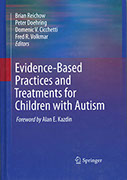 With Vince Wintering. (2011). The Implementation of Evidence-Based Practices in the Public Schools. In Reichow, B., Doehring, Peter, Cicchetti, D. & Volkmar F. (Eds.). (2013) Evidence-Based Practices and Treatments for Children with Autism. (2011). Springer-Verlaug, New York, NY.
With Vince Wintering. (2011). The Implementation of Evidence-Based Practices in the Public Schools. In Reichow, B., Doehring, Peter, Cicchetti, D. & Volkmar F. (Eds.). (2013) Evidence-Based Practices and Treatments for Children with Autism. (2011). Springer-Verlaug, New York, NY.
 (2008). A model for regional training and service delivery for children with autism. International Society for Autism Research. London, UK.
(2008). A model for regional training and service delivery for children with autism. International Society for Autism Research. London, UK.
With Barbara Becker Cottril, (2008). Building capacity: Strategies for organizing and delivering high quality training and other services to children with ASD statewide. Invited talk. National Autism Training and Technical Assistance Programs, Columbus, OH.
![]()
 With Leslie Lesko & Jim Abel. (2007). The psychometric properties of commonly-used instruments for assessing autism, and their correspondence with the DSM-IV. Association for Behavior Analysis. Boston, MA
With Leslie Lesko & Jim Abel. (2007). The psychometric properties of commonly-used instruments for assessing autism, and their correspondence with the DSM-IV. Association for Behavior Analysis. Boston, MA
 With Jim Abel, Brianna Wagner, Leslie , Ruhe Lesko, Kristine Peters, & Kristin Myers. (2008). Where are the data? Publication profiles of articles on autism in JABA, JADD, and JPBI. Association for Behavior Analysis. Atlanta, GA.
With Jim Abel, Brianna Wagner, Leslie , Ruhe Lesko, Kristine Peters, & Kristin Myers. (2008). Where are the data? Publication profiles of articles on autism in JABA, JADD, and JPBI. Association for Behavior Analysis. Atlanta, GA.
 (2002) Developing a comprehensive professional training program: Where do you start? Autism Society of America, Indianapolis, IN.
(2002) Developing a comprehensive professional training program: Where do you start? Autism Society of America, Indianapolis, IN.
 With Cindy Finnegan, Pat Bailey, & Donna Cain. (2002). Do you know what I did today? Visual supports to help individuals with autism to share their experiences. American Speech and Hearing Association, Atlanta, GA.
With Cindy Finnegan, Pat Bailey, & Donna Cain. (2002). Do you know what I did today? Visual supports to help individuals with autism to share their experiences. American Speech and Hearing Association, Atlanta, GA.
X
